The post WHO Warns About a Coronavirus Variant appeared first on Nepali Sansar.
]]>Scientifically dubbed as B.1.621, Mu was first detected in Columbia at the beginning of this year. Since its first detection, reports about Mu infections have sprung up across different parts of the world.
From South America to Europe, Mu infections were detected sporadically and on a larger scale, too, said WHO. The Mu infections were previously reported in UK, Europe, the USA, and Hong Kong.
However, the global spread of the Mu variant is currently below 0.1 percent. On an individual scale, Colombia has 39 percent Mu variant prevalence while Ecuador clocked 13 percent.

The variant has been on the WHO’s radar since August 30, after 39 countries reported its detection. The organization opined that the variant possesses a ‘constellation of mutations that indicate potential properties of immune escape’.
WHO stated that the reports about the variant should be perceived with due consideration as most countries have low sequencing capacity. This is the fifth variant which is of interest to WHO since March.
What is alarming is that the Mu variant has numerous mutated versions, which suggest that the variant could possess stronger resistance to vaccines.
The initial data has displayed that Mu may circumvent the immunity system just as the same way Beta variant did. However, the health organization stated they would need to investigate to confirm their findings.
‘More studies are required to understand the phenotypic and clinical characteristics of this variant,’ WHO said. It added that Mu’s epidemiology would be closely observed for any anomalies. WHO has obtained samples and went over 4,500 genome sequences and designated the variant as Mu. The sequence analysis will help WHO understand how this variant permeates through people.
The variants are prevalent in the USA, with 2,065 cases. Colombia scored the unwanted second spot with 852 cases, while Mexico trailed behind Colombia with 357 cases. South Africa also stated that it was watching the development of another variant in their country.
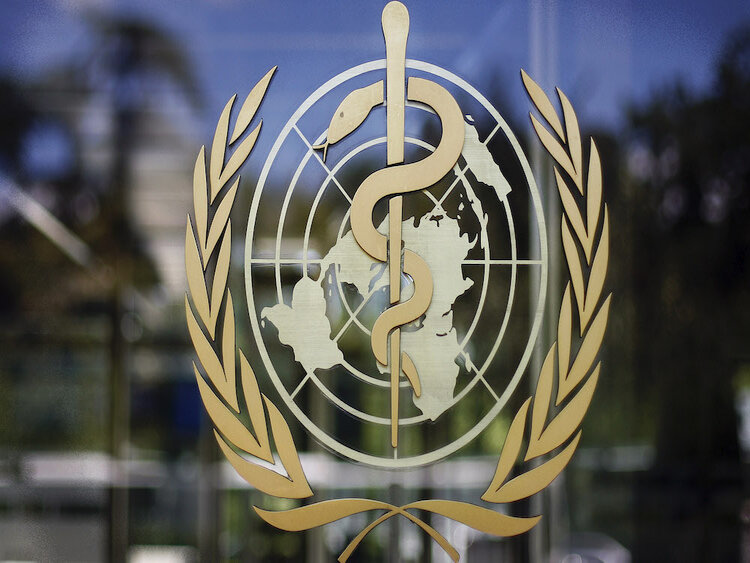
The South African scientists at National Institute for Communicable Diseases and the KwaZulu-Natal Research Innovation and Sequencing Platform stated that the new variant, termed C.1.2, was first detected in May 2021.
It was also detected in China, DRC, and other countries as of August 13. WHO, however, stated that the C.1.2 is not a variant of interest for now.
Stay Tuned to NepaliSansar for Latest Nepal Coronavirus News Updates!
More News:
- 6,000 tourists throng Nepal
- EPL 2021 Champions to Pocket NPR 5 Million Prize Money!
- Nepal to Sri Lanka Direct Flight Launched
- Nepal Aviation Sector Bled NPR 37 billion Due to Pandemic
- 68.6% Nepalis Have COVID-19 Antibodies: MoHP
The post WHO Warns About a Coronavirus Variant appeared first on Nepali Sansar.
]]>The post Nepal’s COVID-19 Vaccination Efforts Lauded by WHO appeared first on Nepali Sansar.
]]>The Director-General said, “This is how far health workers go to save lives.” He penned, “Is it fair that in many places these heroes have still not been vaccinated? It is our duty to do everything we can to ensure equitable delivery of vaccines, and the power lies within us.”
The video, which Tedros retweeted, showed the vaccine container being handed over to a healthcare professional by two men using a stick. The flooded river posed a potential challenge to the professionals transferring the vaccines.
However, the receiving healthcare professional risked his life and leaned dangerously close to the river to grab hold of the vaccine container.

The video, which was circulated across social media, also garnered popularity abroad.
Nepal has begun witnessing floods and landslides in less than a week with the onset of the monsoon. The Himalayan country is battling these natural calamities and the contagion.
Manang district has been flooded, and the flooding has hampered vaccination transferral in the remote areas of the district. The Nepali government has focussed on vaccinating senior citizens in the age bracket of 60 to 64 years.
Also Read: 15 Dead as Floods Ravage Nepal
Until now, Nepal has completely vaccines frontline workers in the first phase. The government also initiated a vaccination drive on January 27 this year.
As per the Health Ministry, 731,653 people have been completely vaccinated. About 2.5 million have received their first jab. In a nutshell, less than 2.5 percent of Nepal’s populace has been fully vaccinated.
About 1.4 million people, who received their first jab of the vaccine, are awaiting their second Covishield dose since March. Owing to the vaccine shortage, President Bhandari wrote to the USA, UK, and Russia leaders to secure the necessary vaccine supply.
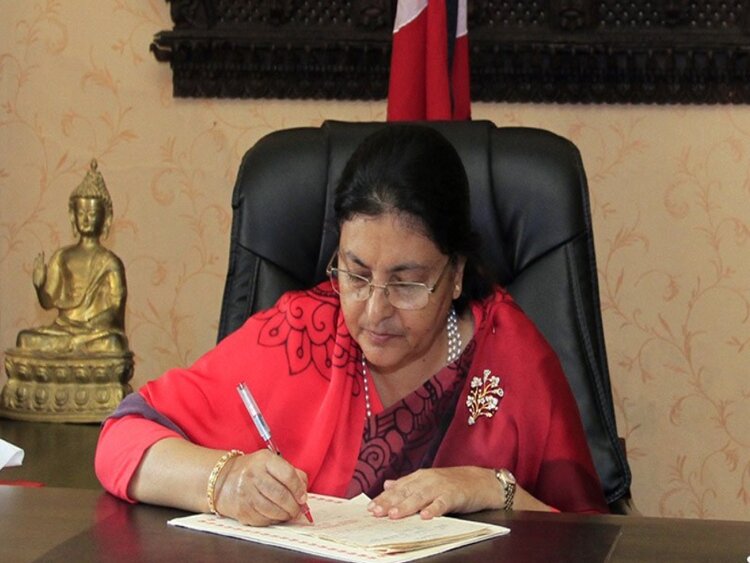
he President’s request to China was fruitful as the Communist nation sent one million doses as a grant. However, the President’s requests to the western leaders haven’t received a response yet.
Stay Tuned to NepaliSansar for Latest Nepal News Updates!
More News:
- Nepal Collects 94.6% of Revenue Target for Current FY with 2 Months Left!
- Nepal tourism may take a couple of years to rebound: Govt
- Commerce Dept. Collects NPR 22.88Mn in Fines from Deceitful Firms!
- Over 100 Nursing Colleges Without Own Hospitals To be Banned!
- World Bank extends monetary support to Nepal’s pandemic fight
The post Nepal’s COVID-19 Vaccination Efforts Lauded by WHO appeared first on Nepali Sansar.
]]>The post Nepal’s COVID Positivity, Transmission Rates ‘2X Times’ More Than India’s! appeared first on Nepali Sansar.
]]>Though the number of coronavirus infections and deaths are comparatively meager in Nepal, owing to its low population, the COVID-19 test positivity rate and transmission rate seem to be significantly very high than that of India.
During a virtual COVID-19 briefing of the Ministry of Health and Population, Dr. Biraj Karmacharya, Director of Department of Public Health and Community Program at Dhulikhel Hospital, informed that Nepal’s COVID-19 test positivity rate and transmission rate are almost double than that of India.
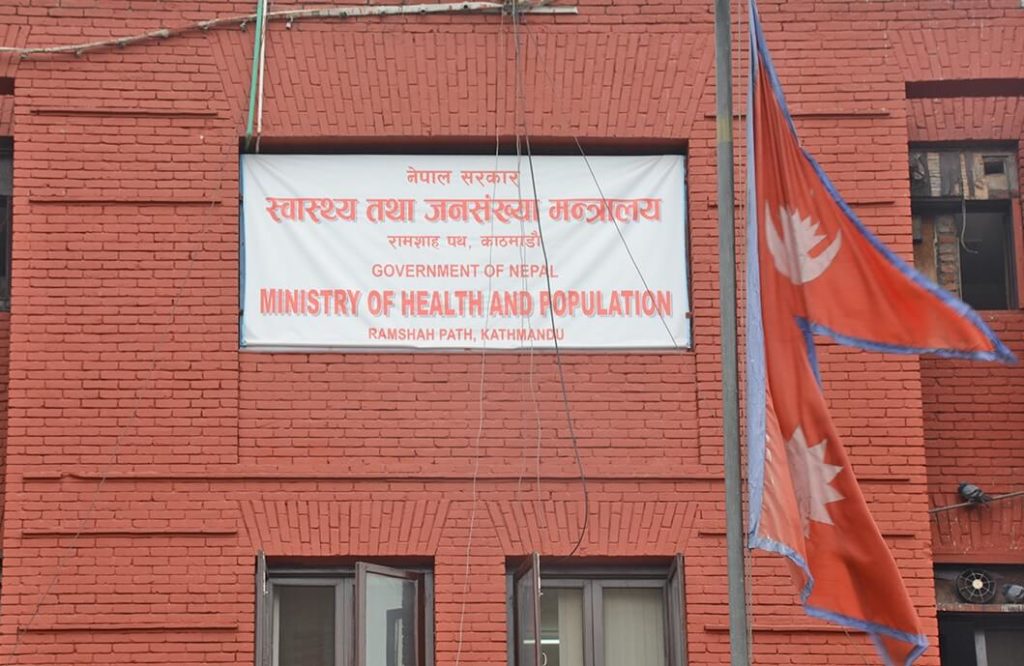
According to government statistics, Nepal’s COVID-19 test positivity rate is 41.9%, whereas the rate is 22.2% in India. Likewise, the coronavirus transmission rate of Nepal stands at 1.8%, while it is 1.2% in India.
However, the COVID-19 death rate in Nepal is significantly low than that of India. The COVID-19 fatality rate in every 1 million population is 1.6% in Nepal, while it is 2.8% in India.
As Nepal continues to report over 8,000 new cases daily, the World Health Organization (WHO) and other health groups warned of a horrifying humanitarian crisis in the country.

In its latest weekly snapshot of the pandemic, the WHO reported that Nepal’s infection cases rose by a staggering 137% in a week.
Likewise, the International Federation of Red Cross and Red Cross Societies (IFRC) said, “Nepal is recording 57 times more cases than this time last month,” adding that the country’s test positivity rate was 44% last weekend.
“What is happening in India right now is a horrifying preview of Nepal’s future if we cannot contain this latest COVID surge that is claiming more lives by the minute,” said IFRC’s Nepal Chairperson Dr. Netra Prasad Timsina.
According to the MoHP, Nepal has reported 8,777 new infection cases and 88 new deaths in the last 24 hours. With this, the nation’s coronavirus infection tally reached 394,667, while the death toll reached 3,720. Currently, there are 88,160 active cases and 302,787 recovery cases in the country.
Stay Tuned to NepaliSansar for Latest Nepal COVID-19 Updates!
More News:
- Live! Nepal’s Covid-19 Helpline and Hospital Contact Numbers!
- Amid Vaccine Crunch, Nepal Urges America to Provide COVID-19 Jabs!
- Nepal To Operate Medical Colleges, Large Hospitals as COVID-19 Hospitals!
- Nepal’s Daily COVID-19 Cases Hit Record High
- Nepal Bans All Domestic, Int’l Flights Till May 14
- Nepal Braces for Devastating Second Wave of COVID-19 Pandemic!
The post Nepal’s COVID Positivity, Transmission Rates ‘2X Times’ More Than India’s! appeared first on Nepali Sansar.
]]>The post World Stroke Day: 70% of Strokes Occur in Low- and Middle-income Countries appeared first on Nepali Sansar.
]]>Around 70% of strokes occur in low- and middle-income countries, where the incidence of stroke has more than doubled over the last four decades, and where, on average, a stroke occurs to people 15 years earlier than it does in high-income countries.
Up to 84% of stroke patients in low- and middle-income countries die within three years of diagnosis, as compared with 16% in high-income countries.
For stroke survivors, lifelong sequelae and disabilities, including mental health problems, are common and can be a source of financial hardship.
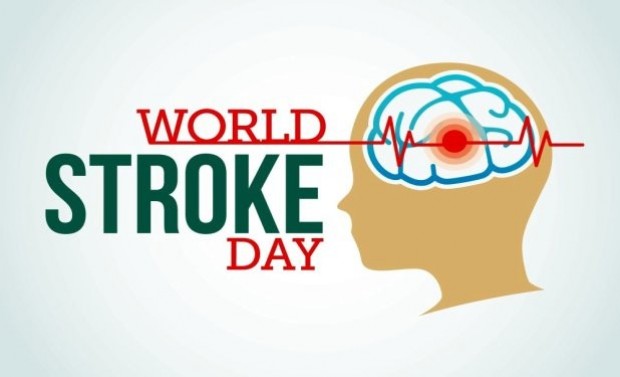
To help achieve the Sustainable Development Goal (SDG) target of a one-third reduction in premature mortality from noncommunicable diseases (NCDs) by 2030, WHO will continue to support countries in the South-East Asia Region to address the primary causes of stroke – including hypertension, diabetes and tobacco use – and will continue to promote the development of quality stroke services that are accessible to all.
Countries in the Region have in recent years implemented a series of high-impact “best buys” aimed at preventing stroke, in line with the Region’s Flagship Priority on preventing and controlling NCDs.
All countries are implementing multisectoral NCD action plans, with a specific focus on enhancing services to detect and treat NCDs at the primary level. Region-wide, tobacco control initiatives continue to be strengthened, with five Member States – namely, India, Nepal, Maldives, Thailand and Timor-Leste – among the world’s top ten countries with the largest graphic warnings on tobacco packaging.
WHO continues to work with countries in the region to promote healthy lifestyles, including greater physical activity, for which the strategies outlined in WHO’s ACTIVE toolkit are of immense value.
To advance progress on the Region’s Flagship Priorities and applicable SDG targets, WHO will continue to support all countries to sustain and accelerate the implementation of interventions that prevent and control NCDs.
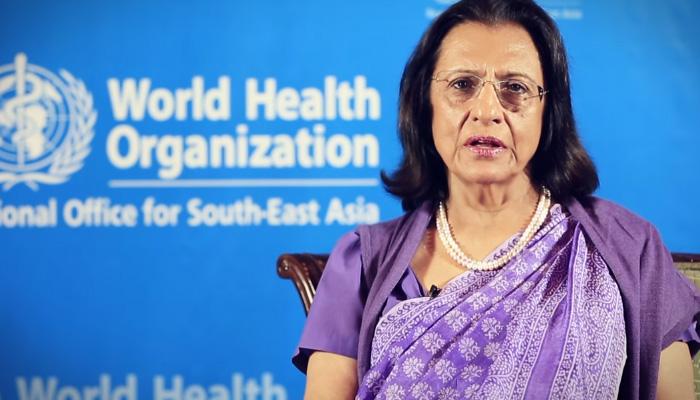
But as new regional guidance highlights, increased efforts are required to scale up the quality and reach of services that can deliver stroke care. Region-wide, countries have great potential to improve and streamline stroke services, for example by increasing the availability of CT scanners, enhancing health workers’ knowledge and skills, implementing evidence-based clinical practice guidelines, and adopting continuous quality improvement programs.
Health services at all levels must have the capacity to provide fast-track referrals and coordinated emergency stroke care, in addition to ongoing support and rehabilitation for people living with stroke.
Amid the Region’s ongoing battle against COVID-19, WHO has provided hands-on technical support to Bhutan, Maldives, Myanmar and Timor-Leste to improve stroke services, and has also conducted online workshops with key partners to scale up core competencies along the stroke care continuum.
Maintaining and strengthening essential health services, including for NCDs, has been – and will continue to be – a strategic priority within the Region’s pandemic response, as underscored by the Declaration on the Collective Response to COVID-19, adopted at the Seventy-third Session of the WHO Regional Committee for South-East Asia.
Throughout the response and into the recovery and beyond, WHO is committed to providing the Member States its full technical support in improving access to quality stroke services to reduce preventable morbidity and mortality and associated financial hardships.

On World Stroke Day, WHO reiterates the critical need to address the disproportionate burden of disability and death that stroke is responsible for in low- and middle-income countries globally, including in the South-East Asia Region.
To do that, efforts to prevent and control NCDs such as hypertension and diabetes must continue to be strengthened, in addition to the provision of resource-linked, evidence-based stroke services that span the continuum of care, from stroke recognition to acute care, rehabilitation and community reintegration.
Together we can realize a Region in which stroke is more effectively prevented and managed, with fewer stroke-related disabilities and deaths, and greater health, well-being and productivity. Let us achieve our vision, for a healthier and more sustainable future for all
-By Dr. Poonam Khetrapal Singh, WHO Regional Director for South-East Asia
The post World Stroke Day: 70% of Strokes Occur in Low- and Middle-income Countries appeared first on Nepali Sansar.
]]>The post Malawi – First Country to Receive First Malaria Vaccination appeared first on Nepali Sansar.
]]>“This is a landmark moment for immunization, malaria control, and public health,” said Dr Kate O’Brien, Director of Immunization and Vaccines at the World Health Organization (WHO).
According to Dr. O’Brien, an early trial of the RTS,S vaccine began in 2009.
Smaller trials of the vaccine administration showed that nearly 40 percent of children (between 5-17 months) who received the vaccine were protected.
“There were seven countries participating in a large trial where over 15,000 children participated,” said Dr David Schellenberg, who has been working on the development of the vaccine with the WHO.
“The trial showed pretty clearly that this vaccine is safe and it is efficacious in terms of its ability to prevent clinical malaria episodes and also severe malaria episodes,” he added.
How does the Vaccine Work?

The RTS,S vaccine reduces the risk of malaria by preparing our immune system to fight and attack the malaria parasite, which is spread by mosquito bites.
Dr. O’Brien said that malaria is a really difficult disease to develop a vaccine against.
He adds that achieving 40 percent efficacy with this vaccine is not high compared to other diseases’ vaccines, but it will be beneficial in limiting the rise of the deadly disease. Especially, when it is combined with exiting preventive measure such as bednets and insecticides.
“It may not sound like much but we’re talking about 40 percent reduction in severe malaria which unfortunately still has high mortality even when you have good access to good treatment,” Dr. Schellenberg added.
According to Dr. O’Brien, the vaccine lasts for at least seven years and will be given to infants as they are more vulnerable.
The vaccine needs to be given four times – once in a month continuously for three months. The fourth dose needs to be given after a gap of 18 months from the third dosage.
Malawi was chosen among the first three countries (besides Ghana and Kenya) to carry out the malaria vaccination test. The pilot test aims to immunize 120,000 children who are two years and younger.
Malaria Kills Over 435,000 People Each Year

Malaria has reemerged nearly decades after putting the deadly disease to rest. The number of malaria cases have begun to rise significantly in recent years.
According to the World Health Organization, Malaria kills more than 435,000 people around the world each year, the majority of which are children. Most of these deaths are in Africa, where more than 250,000 children die every year.
Malaria Cases in Nepal (2017/18) Statistics
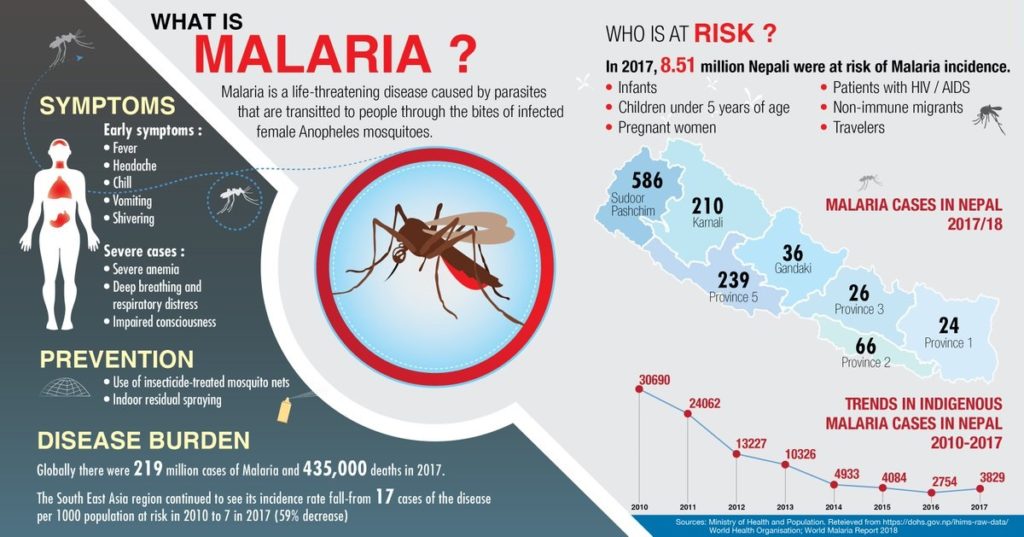
Source:Nepalindata
The post Malawi – First Country to Receive First Malaria Vaccination appeared first on Nepali Sansar.
]]>The post Dr Poonam Khetrapal Singh appointed Regional Director WHO South-East Asia for second term appeared first on Nepali Sansar.
]]>The WHO Executive Board yesterday unanimously endorsed Dr Khetrapal Singh, who was earlier also unanimously nominated by 11 Member countries of the Region for another five years.
Congratulating her, WHO Director-General, Dr Tedros Adhanom Ghebreyesus, said, “the first woman to become Regional Director of WHO South-East Asia Region, you have provided dynamic leadership in a Region that accounts for a quarter of the world’s population but a disproportionate burden of diseases. Under your leadership, the Region has made remarkable progress.”
In her acceptance speech, Dr Khetrapal Singh said, “it is a privilege to once again be appointed as Regional Director of WHO South-East Asia Region. The confidence you have reposed in me is humbling.”
Outlining her vision for the second term that begins on 1 February 2019, Dr Khetrapal Singh, said sustaining the gains, accelerating progress to finish the unfinished agenda and innovating, would be the approach to ensure health and wellbeing of the 1.8 billion people across the Region.
In her first term Dr Khetrapal Singh, focused on building an increasingly responsive and accountable WHO in the Region, while prioritizing persisting and emerging epidemiological and demographic challenges; promoting universal health coverage and building robust health systems; strengthening emergency risk management and articulating a strong regional voice in global health agenda. She identified eight flagship priority programmes, focusing on results and accountability, which are cascading into sustainable and result-oriented efforts.
From vision to results
In the last five years, inclusive, sustainable and quantifiable gains have been made in the Region and are accelerating in pace every year.
Certified polio-free in 2014, WHO South-East Asia became the second WHO Region to eliminate maternal and neonatal tetanus in 2015. Four countries eliminated measles and six controlled rubella. Maternal and under-five deaths reduced significantly.
Thailand became the first in Asia-Pacific and the first with a large HIV epidemic—to eliminate mother-to-child transmission of HIV and syphilis. Maldives and Sri Lanka were certified malaria free. Maldives, Sri Lanka and Thailand eliminated lymphatic filariasis, India was declared yaws-free and Nepal trachoma-free.
For universal health coverage, access to safe, high-quality medicine is being enhanced through the South-East Asia Regulatory Network established in 2016. Countries have developed multi-sectoral action plans for a whole-of-society approach to reverse non-communicable diseases.
Prone to natural disasters, the Region’s investment in strengthening emergency risk management is evident from the responses to the Nepal earthquake, the Rohingya crisis in Bangladesh, cyclones, floods and earthquakes.
There is a strong political commitment to end TB by 2030.
Despite progress we have challenges; some permanent, some programmatic, some epidemiological and some transient, said Dr Khetrapal Singh.
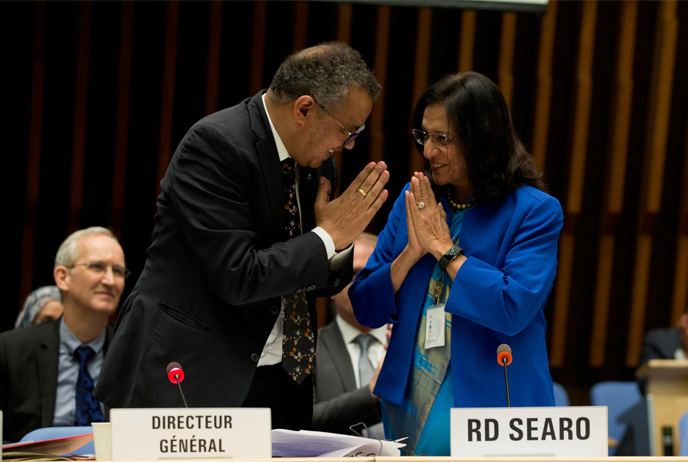
Sustain, accelerate and innovate
Detailing her vision for her next term in her acceptance speech at the Executive Board, Dr Khetrapal Singh said, “We must sustain the gains we made. It means ensuring we hold fast to our progress in diseases elimination, which history shows can return with a vengeance if attention falters, and ensuring that there is no room for complacency”.
“We must accelerate sustainable progress,” she said. Her eight regional flagship priority programmes are aligned to WHO’s global goals and health targets for Sustainable Development Goal 3.
“We must innovate”, Dr Khetrapal Singh said, adding innovation means taking advantage of the existing opportunities, being agile in applying research findings and developing new policies to meet the challenges we face.
“Ending TB will be difficult unless we develop and apply rapid diagnostics, which test and diagnose large populations in a short time. Likewise, we cannot hope to eradicate key neglected tropical diseases which largely affect the poor unless we can create and implement policies that address the needs of specific communities in specific areas,” she said.
The Regional Director said there is a robust commitment to leave no one behind. WHO’s ‘triple billion’ targets, the Sustainable Development Goal 3 and the efforts to achieve universal health coverage focus on equitable access and equity.
“I have confidence that together we will sustain our gains, accelerate progress and harness the full power of innovation to advance health and well-being across the WHO South-East Asia Region,” Dr Khetrapal Singh said.
The post Dr Poonam Khetrapal Singh appointed Regional Director WHO South-East Asia for second term appeared first on Nepali Sansar.
]]>The post WHO Calls for Policy-Shift, Investment on Sanitation Measures appeared first on Nepali Sansar.
]]>The World Health Organization said this as it launched its first ‘Global Guidelines on Sanitation and Health’ in October 2018.
According to WHO, every USD 1 investment in sanitation will give nearly six-fold return measured by lowered health costs, increased productivity and fewer premature deaths.
Urging the countries to start investing in this area, WHO says, “by adopting WHO’s new guidelines, countries can significantly reduce the 829,000 annual diarrheal deaths due to unsafe water, sanitation and hygiene.”
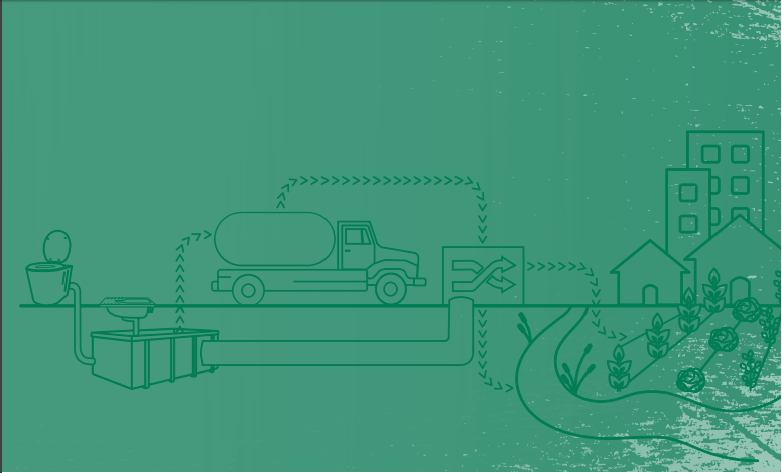
In its report, the international healthcare body said 2.3 billion people are currently lacking basic sanitation, with almost half forced to defecate in the open areas. “They are among the 4.5 billion without access to safely managed sanitation services – in other words a toilet connected to a sewer or pit or septic tank that treats human waste,” it adds.
“Sanitation is a fundamental foundation of human health and development and underpins the core mission of WHO and ministries of health worldwide. WHO’s Sanitation and Health Guidelines are essential to securing health and well-being for everyone, everywhere,” said Dr Soumya Swaminathan, Deputy Director-General for Programmes, WHO.
The new guidelines set out four principal recommendations:
- Sanitation interventions should ensure entire communities have access to toilets that safely contain excreta
- The full sanitation system should undergo local health risk assessments to protect individuals and communities from exposure to excreta – whether this be from unsafe toilets, leaking storage or inadequate treatment
- Sanitation should be integrated into regular local government-led planning and service provision to avert the higher costs associated with retrofitting sanitation and to ensure sustainability
- The health sector should invest more and play a coordinating role in sanitation planning to protect public health
In its release, WHO also highlighted a few countries that have already undertaken similar measures for sanitation and safety.
While India has elevated the challenge of ending open defecation to the highest level under the government’s ‘Swachh Bharat Mission’, Senegal in Africa was found to be the leader in the region in taking up sanitation measures.
Hope more countries would join the list for a healthy world.
See Full Report : Global Guidelines on Sanitation and Health
The post WHO Calls for Policy-Shift, Investment on Sanitation Measures appeared first on Nepali Sansar.
]]>The post Operation Restore Sight Returns to Nepal appeared first on Nepali Sansar.
]]>A team of ophthalmologists headed by Dooley Intermed International President Scott Hamilton and Dr. Ronald C Gentile from New York are travelling to Nepal to provide majorly-required ophthalmic care for more than 1000 villagers from Gunghadi, Western Nepal’s Mugu district, one of the most impoverished and remote Nepali regions.
Nepal-based Himalaya Eye Hospital and the Pema Ts’al Sakya Monastic Institute experts will be supporting the mission.
 Talking about the potential of cataract surgery, Dr. Gentile said that it is one of the economic and satisfying surgeries in the field of medicine as patients receive relief overnight with successful results of full eyesight restoration.
Talking about the potential of cataract surgery, Dr. Gentile said that it is one of the economic and satisfying surgeries in the field of medicine as patients receive relief overnight with successful results of full eyesight restoration.
About the expedition, he said, “All medical care, eyeglasses, medicines and surgeries will be provided completely free of cost to everyone in need.”
The team of experts will include, Yale School of Medicine Ophthalmology & Visual Science Associate Professor Chris Teng MD and Advanced Eye Medical Group Oculoplastic Surgeon Omar Ozgur, among others.
Dooley Intermed Operation ‘Restore Sight’ team has treated more than 1,500 patients from Lower Mustang and Upper Gorkha regions and has been instrumental in the construction of a new Eye Hospital in Nepal’s Kavre District.
The sight restoration program is scheduled to begin in October.
While the Nepal Government is making serious efforts in improving and increasing its medical health care reach, it is the efforts of international health missions like the Gift of Sight Expedition that fill the missing gaps in health care provision in Nepal’s remote parts.
According to the World Health Organization (WHO), around 39 million people are blind worldwide, out of which, approximately 90% of them live in low-income areas and 80% suffer from sight problems that can be cured.
But it’s noteworthy to mark Nepal’s progress in terms of health care so far. The country’s success can be measured through its initiatives to fight and eradicate eye diseases like diabetic retinopathy and trachoma.
The post Operation Restore Sight Returns to Nepal appeared first on Nepali Sansar.
]]>The post Depression Behind Rising Suicide Cases in Nepal appeared first on Nepali Sansar.
]]>Many people across the world have become victims to depression and they ultimately succumb to it. Celebrities, common man, children; there’s no exception.
Now Nepal has begun to see an alarming number of suicides caused due to depression.
According to Nepal Police, each day in Nepal 15 people commit suicide. The rising endemic is not restricted to people of a particular age.
Nepal Suicide Statistics:
- During FY 2017-18, Nepal recorded 2,854 males, 2,242 females and 240 children committed suicide.
- Similarly in the year 2016-17 5,131 people were reported of committing suicide
- Likewise, in FY 2016-17 4,705 people ended their lives
While it is noteworthy that the number of suicide cases in FY 2017-18 have decreased compared to the previous year, the numbers are still alarming.
Factors Leading to Suicide:
Nepali Psychologist Gopal Dhakal attributes depression to the increasing number of suicides.
“Suicide rates have gone up with the increase in the number of people suffering from mental health issues,” says Gopal Dhakal.
Adding further, he says, “There is cut-throat competition in every sector and people are running after material gains. Not all people succeed and those who fail become victims of depression and other mental issues,” he added.
Mita Rani Clinical Psychologist and Associate Professor from Tribhuvan University Teaching Hospital identifies lack of awareness on mental health as the main reason for the increasing number of suicides.
She says mental illness is the most common reason for people to commit suicide. Mental stress, severe health problems and financial problems contribute to suicide.
“Lack of awareness of mental health among people is leading many people to depression. Psychiatric care is rarely sought for people suffering from mental disorders. Many people suffer from depression as a result. If medical or psychiatric help is not sought immediately, such people may develop the tendency to commit suicide.”
She advices that people should openly talk about their mental health so that they can be saved in time. Family members play an important role in preventing suicide.
World Health Organization statistics say that 800,000 people commit suicide every year, across the world. Every 40 seconds, a person dies from suicide and what is more alarming is that every 3 seconds, people attempt suicide.
About 80% of people who committed suicide suffered with depression.
The post Depression Behind Rising Suicide Cases in Nepal appeared first on Nepali Sansar.
]]>The post Nepal Signs ‘Delhi Declaration’ to Ensure Improved Medical Access appeared first on Nepali Sansar.
]]>This includes the provision of medicines, vaccines, diagnostics and medical devices to people within the region and beyond.
To further this cause, Nepal along with other member countries’ representatives signed the ‘Delhi Declaration’ to enhance provision of essential medical products.
“Access to safe, effective and affordable medical products is vital to prevent sufferings and impoverishment resulting from high out-of-pocket expenses on healthcare by families, especially the poor,” said Dr. Poonam Khetrapal Singh, Regional Director, WHO South-East Asia Region.
Owing to a major chunk of the region’s excessive spending on health care, 65 million people fall below the poverty line in the WHO South-East Asia Region.
Improving access to essential medicines has been an important WHO goal since 2014. However, it still remains a challenge to ensure provision of the right medical products at the right time.
The Delhi Declaration seeks to address this challenge by doing the following:
- Allocation of adequate financial resources by member countries
- Reduction of out-of-pocket payment from families on essential medicines
- Strengthening of national policies, regulation, supply chain management
- Enhancing the capacity of intellectual property and trade for public health
- Improvement of access to medicines and vaccines
71st Regional Committee Session
Member countries pledged to build an effective, transparent and engaging procedure for price negotiation within the region and pooled procurement to facilitate access and affordability of essential products for life-threatening and rare diseases, while signing the declaration.
Besides this, they will also focus on:
- Strengthening regulatory cooperation and collaboration to enhance availability, quality and safety of essential medical products through South-East Asia’s regulatory network
- Improving accessibility and affordability within the region and beyond, since the region is emerging as a major producer of essential products especially generic medicines
- Developing an essential product list, especially essential diagnostics list to provide enhanced patient care, affordable quality tests,
- Increasing the potential of disease diagnostics and national laboratories during outbreaks
- Usage of more appropriate antibiotics
- Innovation and investment in research and development for neglected diseases and affordable medicines
Conclusion:
Nepal has been working hard to change its health care scenario and this evident through its recent success of curbing various diseases including rubella. Hopefully, the country will achieve this new goal that it has set through the Delhi Declaration.
Also Read:
The post Nepal Signs ‘Delhi Declaration’ to Ensure Improved Medical Access appeared first on Nepali Sansar.
]]>